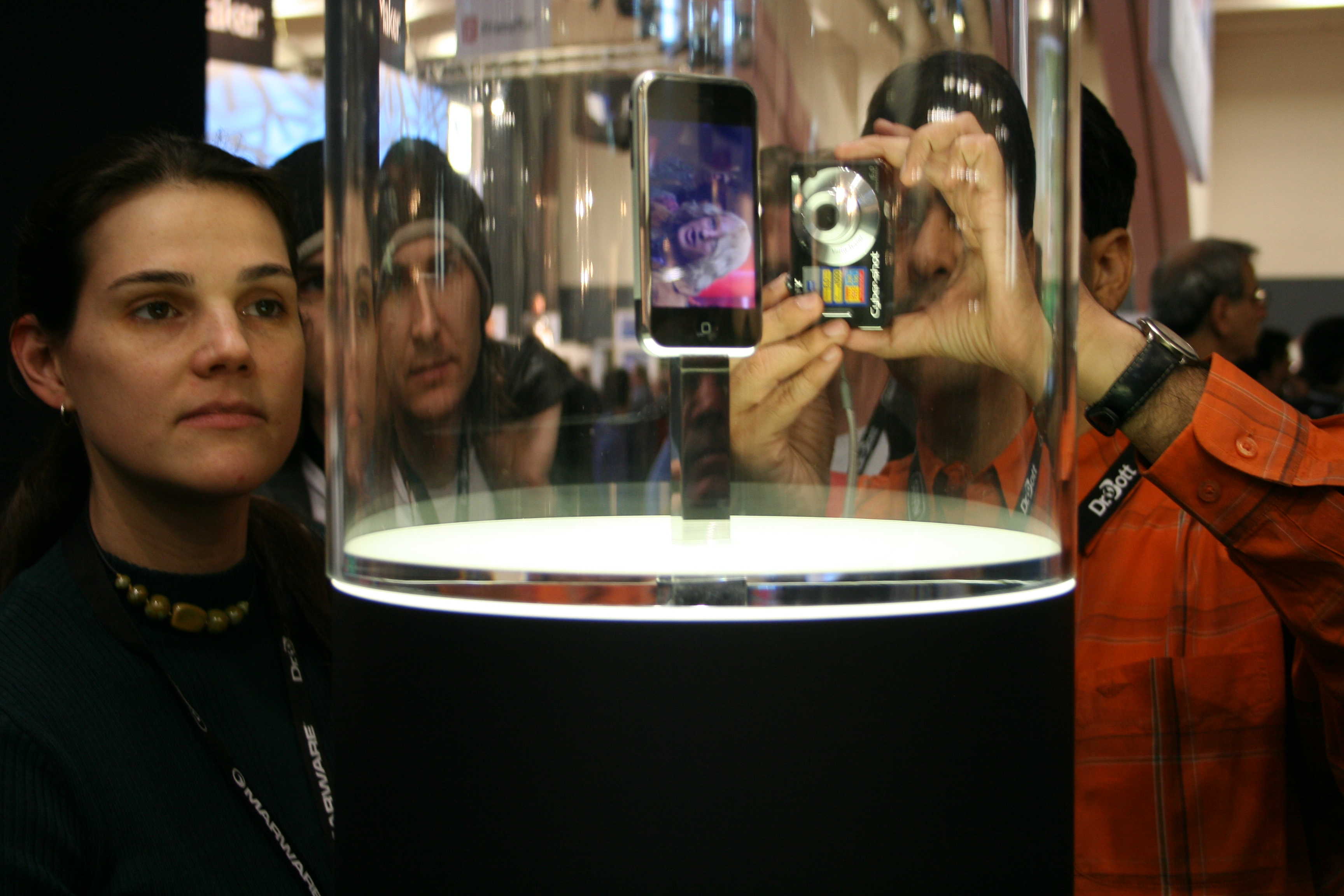Apple turns 40 years old today, and what a journey it’s been: from a promising homebrew startup to an underdog fighting off bankruptcy to an industry-straddling behemoth with $233.7 billion in revenue.
It’s impossible to boil down every significant Apple event into one story, but we did our best to pick out the 40 most significant moments in the company’s past.
Check out these key moments in Apple history below.
This post contains affiliate links. Cult of Mac may earn a commission when you use our links to buy items.
1. Apple is founded!
April Fool’s Day 1976 was the day Steve Jobs, Steve Wozniak, and Ronald Wayne officially started the Apple Computer Company. It wasn’t incorporated as Apple Computer, Inc. until January 3, 1977.
2. Ron Wayne sells his Apple stake for $800
Older than Jobs and Woz, Ron Wayne threw in the towel after just 12 days in the Apple business, selling his shares for only $800.
“I was 40 and these kids were in their 20s,” Wayne told me in an interview for Cult of Mac. “They were whirlwinds — it was like having a tiger by the tail. If I had stayed with Apple I probably would have wound up the richest man in the cemetery.”
3. The Apple I
Apple’s first-ever computer, the Apple I was produced in small numbers and sold for the somewhat devilish price of $666 (because Steve Wozniak liked recurring numbers). Today a working Apple I will set you back around $905,000 at auction.
While Jobs and Woz learned valuable lessons from it, the Apple I was a world away from today’s polished, sleek-looking Apple devices.
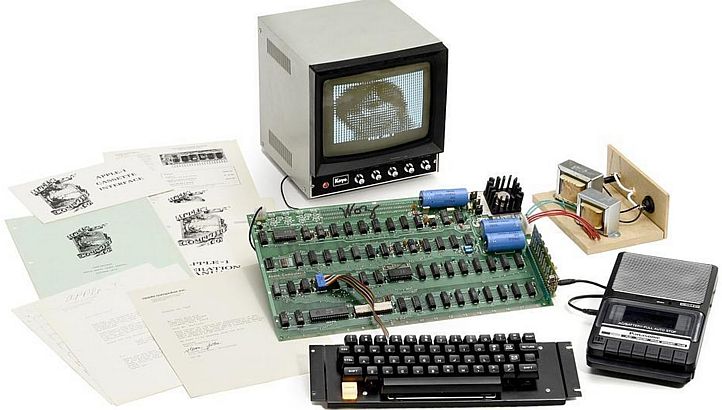
Photo: Auction Team Breker
4. The Apple II
Apple’s first mass-market computer, the Apple II was revolutionary at the time it came out. Far more expensive to develop than its predecessor (getting it into production cost around $200,000), it was widely hailed as one of the world’s first “appliance computers,” which could be bought off the shelf, taken home, and used right away.
Its color graphics made it a rarity in a sea of black and white monitors.
5. The creation of the Apple logo
The bitten apple icon was actually Apple’s second logo, following an Isaac Newton woodcut-style image used for the Apple I. It was created by graphic designer Rob Janoff in 1977. And, no, the bite wasn’t supposed to signify the death of Alan Turing (who committed suicide by eating an apple laced with cyanide.)
There aren’t too many more famous logos than this.

Photo: Nick DiLallo
6. The Xerox PARC visit
If it wasn’t for this seminal visit to the famous research lab in Silicon Valley, the Macintosh (or Windows after it) might never have added a graphical user interface, DOS may still rule the world, and iPhones could have tiny keyboards on them.
7. Apple goes public
Apple’s highly-anticipated IPO took place on 12 December 1980, transforming Jobs, Wozniak and a number of other into instant multi-millionaires. At the time, it was the biggest public offering since the Ford Motor Company in 1956. “Not since Eve has an Apple posed such temptation,” read the Wall Street Journal that day.
Despite holding Apple stock, many engineers didn’t see their stock options mature until a bit later — resulting in a tense waiting game. “I went through a year of being totally whacko because my mood was tied to the Dow Jones,” former engineer Bruce Tognazzini told me for my book The Apple Revolution.
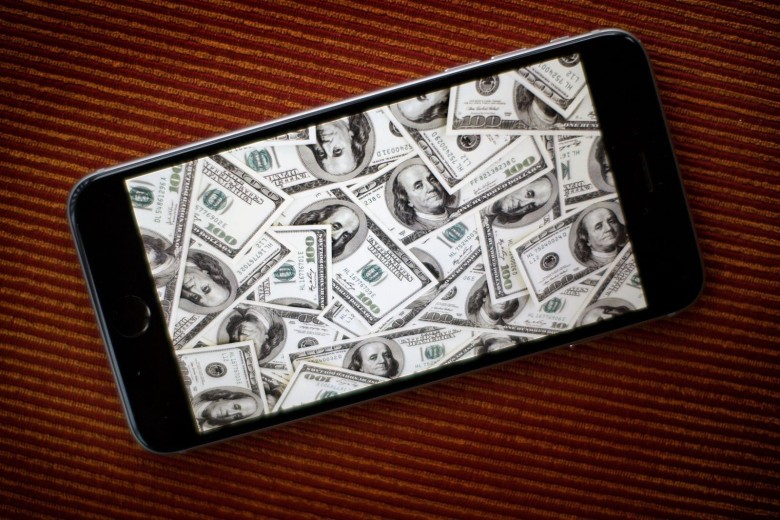
Photo: Jim Merithew/Cult of Mac
8. Disk II
In a world of cloud storage and 256GB iPad Pros, it’s strange to think that there was once a day when storage space was at a severe shortage on Apple machines. With that in mind, the Disk II 5 1/4-inch floppy drive was the most significant accessory for the Apple II: replacing the cassette tapes that had previously been relied on for storage.
With components for the Disk II costing just $140 and a sale price of $495, it was also the start of Apple’s handsome profit margins: a trend which continues through the present.
9. VisiCalc
If the Disk II was the Apple II’s killer add-on, its killer app was VisiCalc: the world’s inaugural spreadsheet program, which transformed personal computers from cool-to-have toy into must-have business accessory. Eventually ported over to other platforms like the IBM PC, VisiCalc wound up selling around 1 million copies in total — but it’s with the Apple II that it’s most synonymous.
10. Welcome to Lisa
The Apple Lisa first shipped in January 1983. Although it’s regarded as a failure — and, as such, was discontinued just three years later — it was a significant computer for Apple.
Notwithstanding the “was it or wasn’t it” drama about whether it was named after Jobs’ daughter (of whom he was then denying paternity), the Lisa was the first Apple computer to boast a graphical user interface and mouse.
Today, an original Apple Lisa will cost you in the tens of thousands at auction. Maybe not such a failure after all?
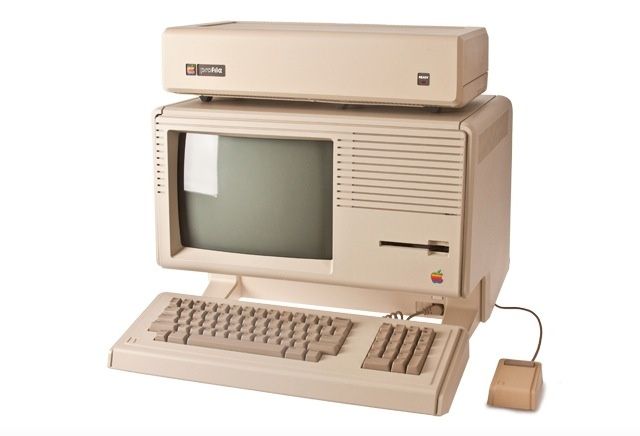
Photo: Jonathan Zufi
11. The Macintosh says “hello”
The Mac is arguably the most iconic personal computer of all time. Although it wasn’t Apple’s first machine to feature a mouse and graphical interface, no computer better epitomizes the company’s spirit and commitment innovation.
Nonetheless, the first Macs which shipped were horribly underpowered. “What I (and I think everyone who bought [the Macintosh] in the early days) fell in love with was not the machine itself … but a romantic idea of the machine,” wrote Hitchhiker’s Guide to the Galaxy scribe Douglas Adams. “And that romantic idea had to sustain me through the realities of actually working on the 128K Mac.”
12. Apple’s “1984” commercial
January 22, 1984, marked the national premiere of Ridley Scott’s now-iconic ad for Apple’s original Macintosh, which aired during the third quarter of Super Bowl XVIII on CBS. This masterpiece of advertising, and key point in Apple history, made news programs that night. It continues to be a touchstone for Apple’s carefully cultivated “outsider” image.
Everyone’s likely seen this by now, but just in case you haven’t…
13. Jobs’ … err … jobs pitch
“Do you want to sell sugar water for the rest of your life, or do you want to come with me and change the world?” was the way Jobs recruited then-Pepsi CEO John Sculley to come and join Apple. Sculley did — helping increase Apple’s sales from $800 million to $8 billion during his decade at the top. Along with some other, more infamous move — which we’ll get to in a moment.
14. The “Snow White” look
Jony Ive is Apple’s design god today, but before then there was Jony Ive there was frogdesign’s Hartmut Esslinger, a German-born designer who came up with Apple’s “Snow White” design language. Used from 1984 to 1990, this memorable design language featured vertical and horizontal stripes to give the impression that the computer enclosure was smaller than it really was.
While it appears retro compared to today’s ultra-thin iMac designs, “Snow White” computers were hailed as design breakthroughs in their day — and signified an important step forward for Apple.
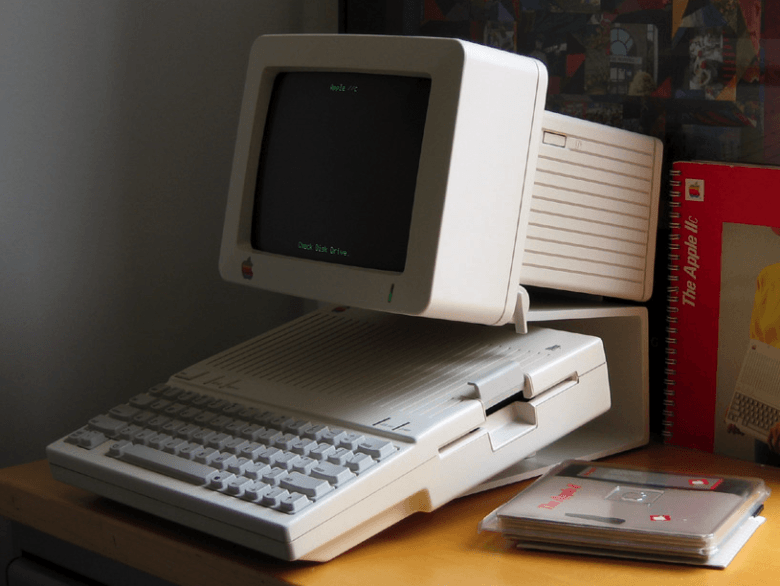
Photo: Blakespot CC
15. Jobs is kicked out of Apple
Apple hasn’t put a foot wrong too many times in its 40 years. One big mistake that stands out in Apple history, however, was allowing Sculley to kick Jobs out of the company he helped found during a 1985 spat with the Apple board. Jobs went off to found NeXT and buy Pixar. Apple ran into problems during a dark period in which it came dangerously close to bankruptcy.
“There could have been a very different outcome,” Sculley told me when I interviewed him for Cult of Mac earlier this year. “We should have spent more time working out how to solve the problems in our relationship so we could work together.”
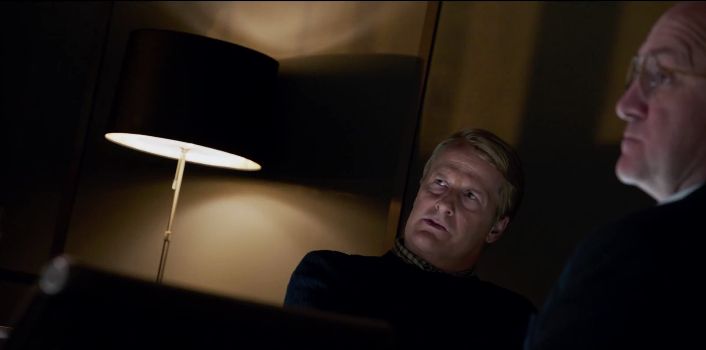
Photo: Universal
16. Hypercard
Fitting in well with Macintosh’s DIY ethos early on, 1987’s Hypercard let anyone create powerful applications with no knowledge of programming required. Making a Hypercard “stack” was no more difficult than word processing, and thousands of applications were created with it — including runaway success game Myst.
17. Newton MessagePad
These amazing personal digital assistants were too far ahead of their time, released in 1993 and eventually cancelled by Steve Jobs when he returned to the company as CEO. Parodied by The Simpsons, but fondly remembered by many Apple fans, the Newton paved the way for many of the mobile innovations Apple would unleash in later years.
18. Apple buys NeXT
Like a lot of the things Jobs focused on during the first half of his career, NeXT was ahead of its time. Failing to make money as a hardware manufacturer, Jobs eventually sold the company — along with its revolutionary operating NeXTSTEP operating system — to Apple for a little over $400 million. It was some of the biggest tech news of 1996.
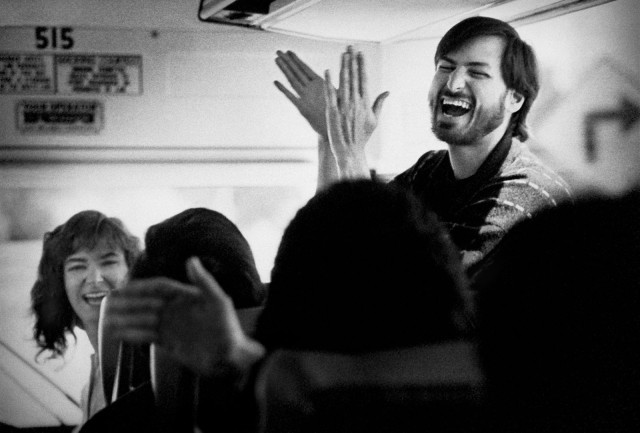
Photo: Doug Menuez
19. Steve Jobs returns as CEO
Steve’s reunion with Apple is the stuff of legends and one of the greatest comeback stories the world has ever seen. Not only did a much more mature Jobs get to once again lead the company he founded, he also managed to save it from the brink of death and somehow turn it into the most profitable public company in the world.
20. “Think Different”
“Think Different” was the big Apple ad campaign to mark Jobs’ return to Apple. Despite having no new products to showcase (the iMac wasn’t out yet), the resulting tagline, billboards and TV commercial re-energised the Apple brand and made it cool again. How many other decades-old ads do people still regularly discuss today?
21. Licensing and then killing third-party Macs
It seems crazy to think that there was a time when most of us were begging Apple to license Mac OS to third-party PC makers. In 1994, then-CEO Michael Spindler gave two small companies, Power Computing and Radius, permission to build Mac clones.
Unfortunately, it backfired: while Apple earned $80 per computer sold, it cut into its own Mac business, where it made $500 in profits per machine. When Jobs returned to Apple he put the whole misguided strategy out of its misery.
22. Bill Gates interrupts MacWorld
Fans usually go home happy from Apple keynotes. Not so much in 1997, when sworn enemy Bill Gates appeared on screen to announce that he was pumping $150 million of Microsoft money into the company as part of a partnership deal.
Knowing how things turned out, former Microsoft CEO Steve Ballmer has since described this as the craziest thing the Windows-maker ever did.
23. “Think Profit”
Like so much about Apple more than a decade ago, it’s mad to think there was a time when simply announcing a profit was reason to get excited. But after coming within 90 days of bankruptcy at the time Jobs returned as CEO, it was truly a moment to remember when he announced that Apple had made profits of $45 million for the first quarter of 1997.
The amount the company had lost the year before Jobs returned as CEO? $1.04 billion.
24. Jony Ive meets Steve Jobs
Unlike a lot of moments on this list, Jobs’ first meeting with Jony Ive didn’t take place publicly — but we sure got to enjoy the results of it. As Ive has since revealed, he planned to leave Apple when Jobs returned, and even went to their first meeting with his resignation letter in his pocket.
Fortunately that didn’t happen — and the two enjoyed one of the most fruitful creative partnerships in corporate history.
25. Bondi Blue iMac
The curvy, colorful iMac set the stage for Apple’s comeback. The first major product after Steve Jobs return to Apple, the iMac put distinctive design front and center. Clad in semi-transparent “Bondi Blue” plastic, it looked utterly unlike any computer before it, which all came in regulation beige.
Critics hated it, and said the lack of a floppy drive would doom it to irrelevance. But customers disagreed. It took off like a rocket and was the first in a string of monster hit products that returned Apple to the forefront of consumer electronics.
Future iMacs continued the string of innovations, right up to today’s 5K ultra-slim models.
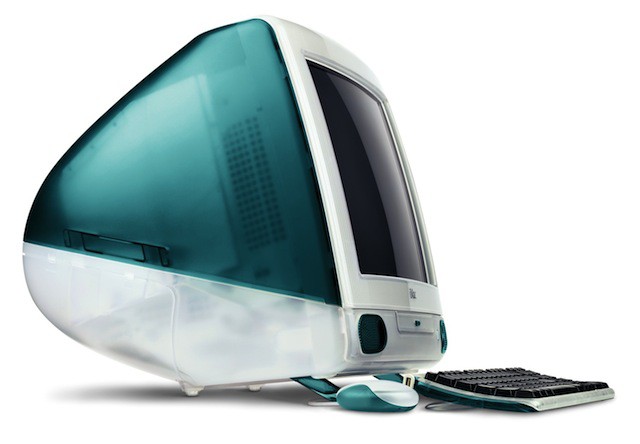
Photo: Apple
26. The birth of OS X
First released in 2001 and still going today, OS X was a UNIX-based successor to Mac OS, the original Macintosh operating system. Built using technologies developed at NeXT, it continues to power Apple’s computers today.
Despite raising everyone else’s game, it remains the operating system of choice for many pros.
27. The iPod puts “1,000 songs in your pocket”
Back in the day, taking music with you meant a backpack full of tapes or a binder of CDs and some very serious consideration about skip protection. Luckily, the iPod arrived in 2001 to save our bag space and keep unsightly Walkmans from ruining the lines of our outfits.
It even launched with a cool ad campaign featuring a bunch of very attractive silhouettes dancing to a selection of popular tunes against bright, colorful backgrounds. It was like watching the last scrap of the ’90s dying right in front of us, and it’s all great fun until we remember that the device didn’t sell very well for the first two years because it cost $400.
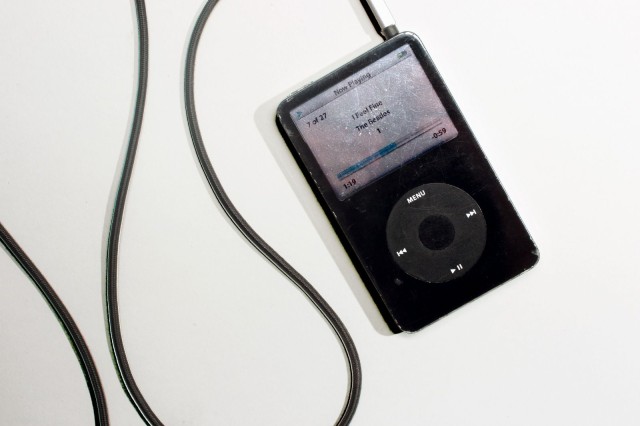
Photo: Jim Merithew/Cult of Mac
28. The Apple Store
Whether it’s the iconic Fifth Avenue store that’s New York City’s most photographed landmark or the spate of more recent Chinese openings, Apple Stores have become a fixture around the world since being introduced in May 2001.
With nearly 500 stores worldwide, we could fill this list with just the flagship Apple Stores — with each opening being a memorable moment in its own right. As it is, the moment we’ve chosen is Steve Jobs giving us a pre-launch tour of Apple’s first retail store in Tyson’s Corner, Virginia. Talk about your dream Apple Store assistant!
29. The Digital Hub
Apple’s ecosystem is stronger than ever today, with iTunes, the iPhone, the iPad, Apple Watch and iMac all feeding into one another.
However, it all started in January 2001 when Steve Jobs introduced the idea of the Digital Hub: whereby the Mac would act as a central hub for controlling and integrating the digital cameras, DVD players, DVRs, and other accessories we were fast accumulating.
At a time when many were already predicting the death of the personal computer, Jobs showed us why the Mac still mattered.
30. Launch of iTunes Store
Whilst Limewire and Napster were cashing in by helping users stealing music, Apple swam against the tide. Legalizing music downloading by making agreements with all the largest labels in the business, the iTunes Store changed the course of the music industry when it launched on 28 April 2003.
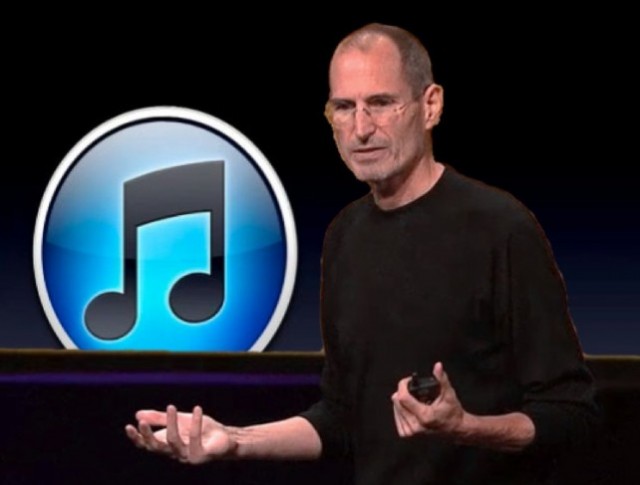
Photo: Apple
31. The switch to Intel
In 2005, Apple moved to Intel processors, ushering in the current golden age of Apple. Using industry-standard chips not only allowed Mac users to run Windows software via Boot Camp, but also led the way to cheaper, faster machines which continue to evolve through the present day.
32. Steve Jobs’ Stanford address
Forget about memorable Apple moments, Jobs’ 2005 commencement speech to the graduating class at Stanford was one of the most memorable opening addresses ever given, period. If you haven’t seen it before, you owe it to yourself to watch Jobs discuss “connecting the dots.”
Fun fact: he received writing help from screenwriter Aaron Sorkin, who later wrote the Steve Jobs movie.
33. The iPhone
“An iPod, a phone and an Internet communicator.” That’s how Steve Jobs described the iPhone when it was introduced in 2007, yet it’s become so much more. To some, it’s a camera; to others a music player, journal, fitness tracker, gaming platform, or shopping device. The iPhone set the standard for what a smartphone for be.
Nearly a decade after its debut its impossible to imagine how we would get through life without Apple’s most magical device.
34. The “thermonuclear war” with Google
Nothing quite upset Steve Jobs like Android did. Google’s mobile OS was very different before Apple announced the iPhone, designed for BlackBerry-like devices with physical keyboards and buttons rather than touchscreens. But that changed almost overnight after the search giant found out what Apple had been working on.
This caused Jobs to label Android “grand theft,” according to biographer Walter Isaacson. “I’m going to destroy Android, because it’s a stolen product. I’m willing to go thermonuclear war on this,” he said. Jobs told Eric Schmidt, who was Google CEO at the time, that he wasn’t interested in compensation; he just wanted Android gone.
“I will spend my last dying breath if I need to, and I will spend every penny of Apple’s $40 billion in the bank, to right this wrong.” The signs of the confrontation still linger today — most notably with the ongoing patent battle between Apple and leading Android device-maker Samsung.
35. Apple TV
2007 was the year when Apple released its “hobby” device, the Apple TV, which has grown to become an exciting and significant part of the company’s business: helping (along with ever-cheaper broadband internet and services like Netflix) drive the current post-broadcast era of television.
Now with apps and voice-enabled features, the Apple TV is Apple’s Trojan Horse in the war for set-top domination.
36. Here comes the iPad
The iPad actually began life before the iPhone, and is arguably the best summation of Jobs’ insistence that a computer should be as easy-to-use and personal as possible. Unlike every other keynote Jobs ever gave, he introduced the iPad reclining in an easy chair: showing off just what made Apple’s tablet different to any other device it had put out before.
iPad sales have stumbled in recent years, but the arrival of the “Jesus tablet” was definitely a memorable moment in Apple history.
37. Steve Jobs’ death
Steve Jobs’ death was a horrible, unexpected shock. In retrospect, it shouldn’t have been a surprise, but he guarded his privacy closely and Apple corporate had been uncommunicative — to the point of misleading — about his declining health.
The outpouring of grief worldwide was genuinely touching and surprising. Who knew a corporate titan could command such adulation? Fans reacted in the most affecting way, leaving the windows of Apple Stores covered in tributes and a huge curbside memorial at his Palo Alto home.
His last words were appropriately pop and profound, like a John Lennon lyric: “Oh wow, oh wow, oh wow.”
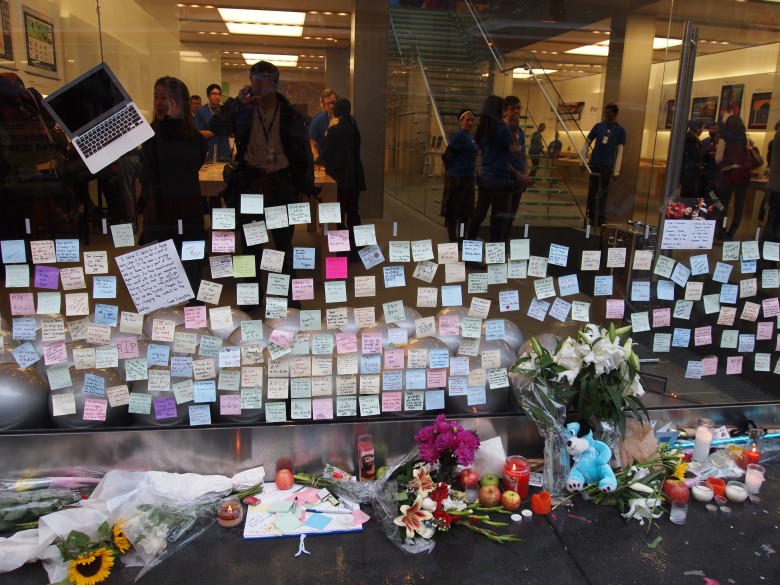
Photo: Traci Dauphin/Cult of Mac
38. Tim Cook takes over as CEO
Tim Cook has never claimed to be the product visionary that Steve Jobs was. Instead, he’s used his time at the top off Apple to further streamline the company’s operations wizardry, while also focusing on the kinds of social issues that Jobs rarely showed an interest in.
Cook has been clear about his desire to make Apple a “force for good” in the world — and so far it’s impossible to say he’s not made positive steps in that direction.
39. Apple Watch gets personal
The first new product line to launch after Steve Jobs’ death, the Apple Watch faced heavy scrutiny from a rabid tech press when it was unveiled in 2014. Had Apple forgotten how to innovate? Was Cupertino doomed?
While Apple’s smartwatch hasn’t set the world on fire (yet), it has surprised us ever since its launch last April — and usually in good ways. We’re calling it a keeper.
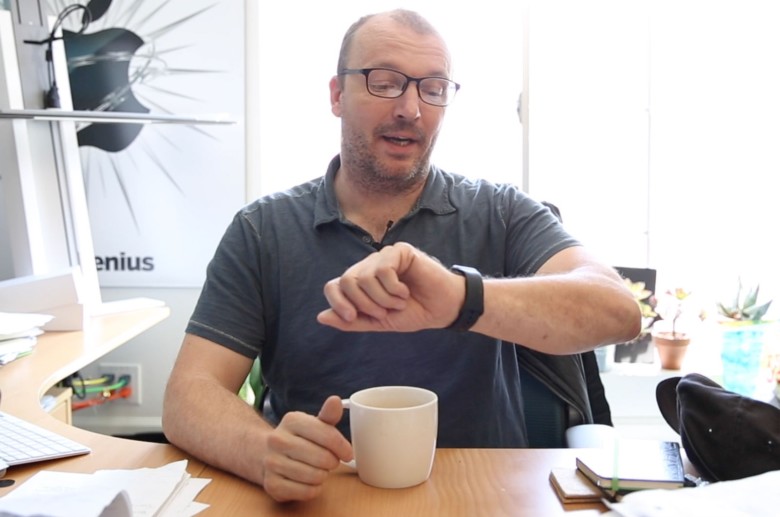
Photo: Jim Merithew/Cult of Mac
40. Apple Music
Apple Music is Cupertino’s $3 billion baby. The only question is, will Apple Music survive its growing pains and mature into a world-beating streaming music service?
Nearly a year after the Apple Music launch, nobody knows for sure. Apple Music has lured 11 million subscribers to its endless ear buffet, but it still lags market leader Spotify (and faces increasing competition from a pivoting SoundCloud as well as internet radio pioneer Pandora). Kinks remain that need to be worked out, but Apple’s cozy ecosystem and countless exclusives provide enticing bait that could hook next-gen music lovers.
Have we left any of your favorite Apple moments out? Let us know in the comments section.
Additional reporting by Rob LeFabvre, Evan Killham, Killian Bell, Buster Hein, Lewis Wallace, Leander Kahney
